While vegans always avoid real leather, it turns out that faux leather is not always an environmentally friendly solution.
There is an increasing interest in investigating and mitigating the damage that synthetic leathers have on our planet.
Real leather is not environmentally friendly, but it turns out, many faux leathers aren't, either.
Production of both real leather and faux leather involves the release of chemicals that are dangerous to the environment as well as the employees or factory workers that are there.
Tanning is a process during leather production and usually incorporates substances like hydrogen sulfide and ammonia, which increases the employee’s risk for skin, respiratory, ocular or nerve damage, or in extreme cases - death.
It can feel daunting to make ethical fashion decisions when there aren't any readily available, environmentally friendly alternatives to animal products out there.
But the vegan leather industry is making new advancements all the time.
One day you may find that it is not so hard to source a sustainable, earth-friendly vegan leather jacket or pair of boots.
That day may arrive sooner than you think.
Vegan Leather is Fake Leather
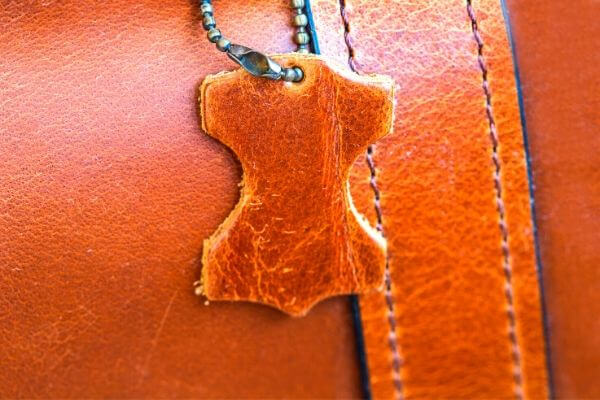
Vegan leather is all the rage lately, which is good for animals - but what, exactly, is it?
It turns out that there is no one answer to this question.
At its core, vegan leather is a leather-look fabric that is made without killing any animals.
Today you can find it used across a range of products - including shoes, bags, jackets, and more.
You might be thinking, "this is great! Leather that doesn't harm animals is widely available!"
Well, yes, and also no. The processes used to make the most common vegan leathers are not exactly environmentally friendly.
But before we discuss that, let's look briefly into the process of making animal leather.
Hey new friend! To say thanks for visiting Leafy Souls and supporting our mission, here's a gift of $5 off any purchase on our site. We have over 500 stylish, high-quality and 100% vegan products. So what are you waiting for? Just use 'WELCOME5' at check-out and view our beautiful collection here!
How Animal Leather is Made
Animal leather is made by treating the skin in a process known as tanning.
Tanning essentially changes the hand of the skin, rendering it a supple and flexible material that is impervious to rot.
Traditionally, tanning was performed using extracts derived from plants.
This process is still used today in high-end leathers and is known as vegetable tanning.

Vegetable tanning takes weeks to produce a finished piece of leather that is ready to be made into a garment, however, so people sought out a cheaper, faster way to do the same thing.
Enter the chemical tanning.
Chemical tanning uses toxic chemicals such as chromium salts and formaldehyde to complete the same process but in just a day or two.
As a result of the decreased man-hours necessary to produce a piece of chemically tanned leather, the products made from this type of leather are much cheaper to buy than those made from vegetable-tanned leather.
But at what cost to the environment?
Chrome-tanned leather is soaked in acid.
Wastewater is a byproduct of the process, and if it not properly disposed of, it can do debilitating harm to the environment.
The vast majority of the world's leather is treated in this manner.
Environmental Impacts of Vegan Leather
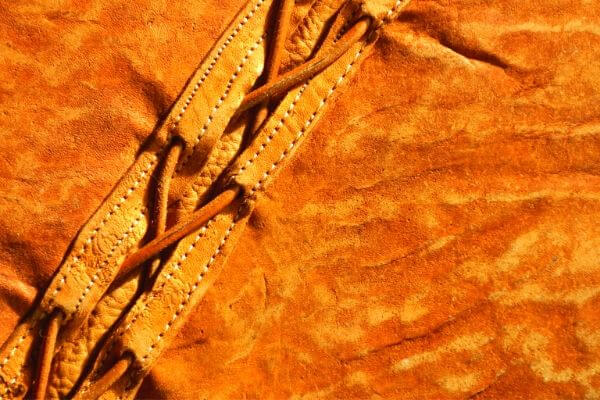
Vegan leather, by contrast, does not need to be tanned to resist rotting, as it has largely been made of synthetic materials.
The first faux leather was made of rubber and called Naugahyde.
It was invented in the United States in 1920, and its first use was in handbags.
The brand became popular in the mid 1960s, thanks in part to a shrewd marketing campaign that created a fictional creature named Nauga.
Nauga was said to shed his skin once per year, lending it to the makers of upholstered furniture.
Nauga was such a hit; he even appeared on Johnny Carson.
Traditionally, vegan leather on the market has been made out of plastic.
There are two main types of leather: polyvinyl chloride (PVC) and polyurethane (PU).
We will discuss both types of synthetic leather, the processes by which they are made, their environmental impacts, and alternative leather products that have popped up in recent years.
Polyvinyl chloride leather
You know those cheap-looking, fake-patent-leather boots and purses you see in discount shops?
Those are made of PVC.
PVC is plastic that has been rendered pliable and flexible by the use of chemicals known as plasticizers.
Plasticizers are chemical compounds that are made up of alcohols and acids, as well as other substances.
More than 40 percent of PVC is made from petroleum - so when you're wearing a PVC jacket, you're actually wearing fossil fuels.
PVC is very sturdy and durable, which is great when you have a piece made from it, but not so great for the planet.
While animal leather decomposes in about 50 years, it takes PVC at least ten times that long, and it doesn't break down completely.
Because it is made of plastic, PVC will break down into microplastics that end up in our oceans and water supply.
Not ideal.
What is PU Leather?
The other common synthetic leather product you may be familiar with is a polyurethane (or PU). Polyurethane material starts with polyester fabric that is then layered with plastics that are -- you guessed it -- made of petroleum and chemicals.
PU is more flexible and supple than PVC and is more expensive to make. It is still a cheaper alternative to animal skin leather. Like PVC, the manufacturing process for PU can release toxins into the air and water supply.
Like PVC, PU products will break down into microplastics that clog our waterways.
And neither PVC nor PU products can be recycled into something else.
So yes, they are vegan but are still iffy for the environmentally conscious.
If you are wondering about the sustainability of leathers in general, or want to see how vegan leathers match up to other fabrics, you might be interested in the 2017 Pulse of the Fashion Industry report, which went into detail on these topics.
In sum, the report found that all its dirty secrets aside, faux leather ranked well below real leather in a list of fabrics that quantified environmental impact per kilogram.
Faux leather had only 1/3 the impact on the environment of leather made from cows.
Famous vegan designer Stella McCartney uses PU in her fashion line.
She claims to only use solvent-free PU, claiming it is more environmentally friendly than conventional PU. In addition, McCartney's PU is made partially from vegetable oils, so there's a bit less petroleum in it.
Her company is also exploring lab-grown synthetic leather.
You might feel a little discouraged to know that the most commonly used vegan leather is made from plastic, which in turn is derived from petroleum.
Even if you're not killing animals for fashion, it can be hard to swallow the idea that you are dressed in petroleum products.
But there are a few options for truly biodegradable vegan leather that is made without the use of harsh chemicals, with more coming on the market every day.
We will discuss these a little further down.
Is Vegan Leather Waterproof?
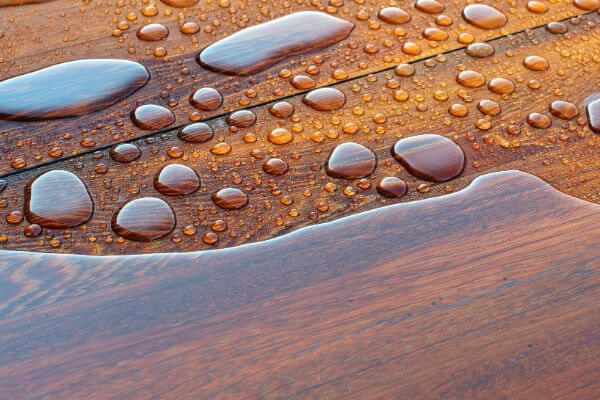
The plastic-derived leathers are waterproof because, well, they are made of plastic.
So one benefit to a pair of boots made of PU or PVC is that, unlike their real leather counterparts, they will not get stained in a downpour.
So you don't need to buy any waterproofing materials for vegan leather garments or accessories that are derived from plastics like you do when you're using real leather.
Of course, these vegan leather materials' imperviousness to water means that they are also not very breathable, and thus, less comfortable to wear.
Is Vegan Leather Good Quality?
This is kind of one of those neither-here-nor-there questions.
If you are avoiding leather out of concern for animals, you're not going to buy it, no matter what.
The truth is that vegan leather is not as durable as real leather.
A pair of shoes made from vegan leather cannot be conditioned and restored the way a pair of animal leather shoes can.
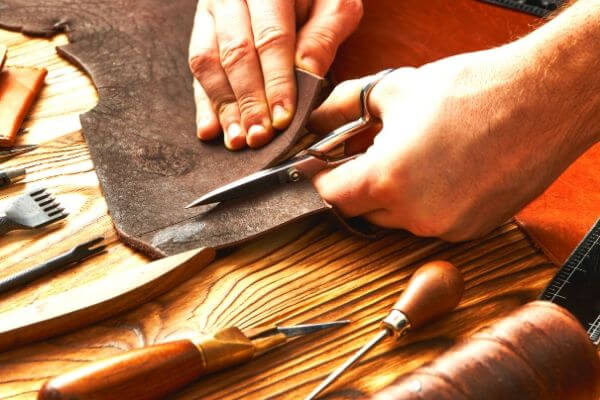
Well-cared-for, animal leather items can last a lifetime, while vegan leather shoes tend to look beat up after a year of regular wear.
A vegan leather purse or jacket may last longer just because it won't be subject to as much wear and tear as a pair of shoes.
Being Eco-friendly is Hard
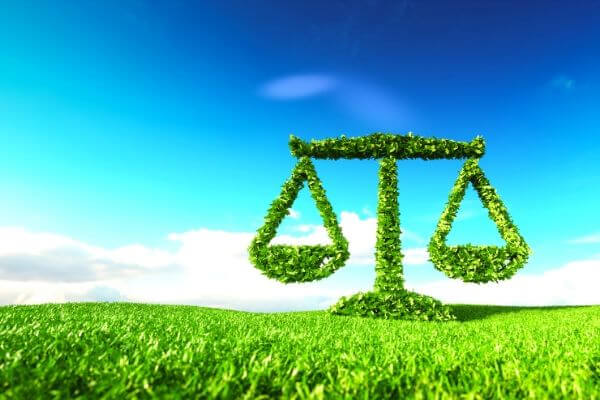
You can find legitimate manufacturers of vegan leather products that use more sustainable materials such as Vegetan, which can be 70-80 percent biodegradable, or Lorica (or EcoLorica).
Another type of hi-tech material created from combining microfibres soaked in resins.
And then there's cork, barkcloth, glazed cotton, and waxed cotton.
There are also hemp, cotton, and other vegetable or fruit-based fabrics, but they are still in their infancy stage, and most top designers do not use them.
You are generally left with basic items to choose from or a hippie style. In addition, to being limited in product range and choice of materials, you must find stores that produce ethically, and this is difficult.
It takes hours of research and reading to find the brand that makes clothes the way you like and in a material that is eco-friendly.
Leather Alternative Leaders
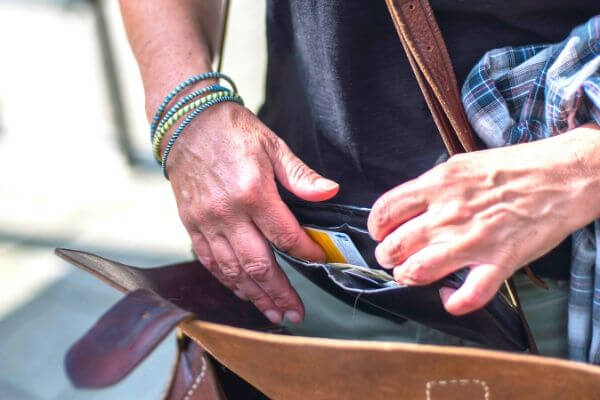
Some manufacturers, including Valentino and the entire Gucci Group, have made it known that they are aware of the issues surrounding leather production.
They are moving to use only vegetable dyes, natural tanning processes, and to source leather made from cows that were raised on established farmland, rather than on land that was formerly rain forest.
Valentino and Kering have also pledged to phase out products made from PVS, while Vivienne Westwood still uses it in some fashion offerings.
Innovative entrepreneurs are producing vegan leather made out of a variety of food industry byproducts you wouldn't expect, including fish and eel skins.
Is All Vegan Leather Made of Plastic?
As more people become interested in avoiding animal products and finding garments made of vegan material, it might be easy to worry that the only alternative is plastic material.
Luckily, that's not so.
More and more vegan leather is being made that is more sustainable and environmentally friendly than PVC and PU.
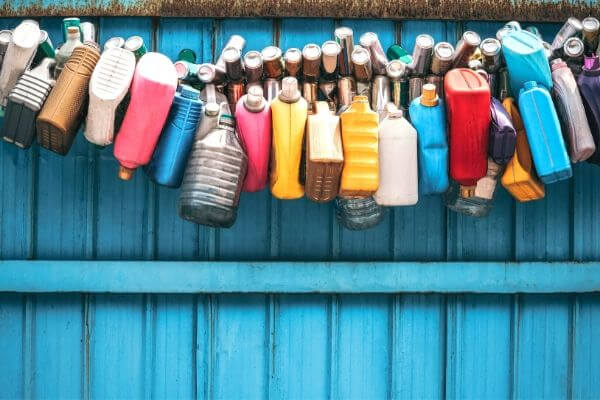
In the world of eco-friendly vegan leather accessories, it's hard to beat the sustainability of Piñatex, a vegan leather product that is made from pineapple leaves.
This is an industry that has been created around a waste byproduct of the pineapple fruit harvest.
Today, you can find pineapple leather products in the product lines of an increasing number of brands.
NAE Vegan, Bourgeois Boheme, and Hugo Boss, to name just a few.
There are many other leather alternative products made of natural materials: cork, bananas, mushrooms, grape skins, and coffee just to start.
For a comprehensive listing of vegan leather products, check out our behemoth post that goes into detail about all the different varieties available today.
Where to Find Vegan Leather

Our best tips for finding cruelty-free and eco-friendly products is to follow the right people on your Instagram, Facebook, Pinterest - all of your social media pages!
Just search for words like “vegan” or “eco-friendly,” follow the tags and the people and slowly, but surely, your news feed will be filled with alternative brands that provide a lot of transparent information on their website and well-made products.
Just be prepared to pay a pretty penny for them.
Veganism and eco-credentials often come hand in hand, so it’s no surprise many of the newer alternatives are striving to be as environmentally friendly as possible.
The vegan leather industry is proving to be a very fast-moving market. It's reasonable to expect many new innovations in the future, as the demand for sustainable, ethical, and cruelty-free products rises.
Designers are listening, though. Vegan Fashion Week was started in Los Angeles by Emmanuelle Rienda, a creative agency mogul and animal rights activist.
She saw a niche that was underserved - high fashion lovers who are also vegan - and sought to fill it. If you are looking for more information about Vegan Fashion Week, check out their web site here.
Now you probably have more information about vegan leather material - polyurethane, PVC, plants, and more - than any one person knows what to do with.
It can be confusing and paralyzing to make choices in a world where there isn't an easy right answer.
As with everything, all you can do is the best you can do. We're here to make that easier. So if you're looking for vegan leather products, check out our assortment of belts and handbags at LeafySouls.com.

